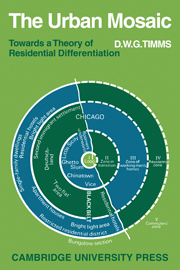Book contents
Summary and conclusion
Published online by Cambridge University Press: 05 January 2012
Summary
Like the society in which it exists, the modern city is highly differentiated. Different parts of the city are associated with different populations, with different opportunity structures, and with different reputations. The geographical framework of the city provides the basis for the emergence of a mosaic of social worlds. The increasing movement characteristic of modern society has almost certainly lessened the salience of location in the day-to-day lives of city-dwellers, but it remains the case that residence in one part of the city rather than in another has implication for a wide range of behaviours and biographies. The effects of location may be expected to be most pronounced on those whose daily movements are more or less confined to the bounds of their immediate neighbourhood – the young, the old, and the ‘care-takers’ – but the role of the local community in the initial socialization process and in the provision of a reference for social comparison purposes, ensures that the influence of the ‘neighbourhood effect’ is felt across a variety of activities and groups. Different populations have different relationships to their locale and areas which are suitable for one group may be quite unsuitable for another. The diversity of urban life and society both reflect and demand a diversified community.
- Type
- Chapter
- Information
- The Urban MosaicTowards a Theory of Residential Differentiation, pp. 250 - 253Publisher: Cambridge University PressPrint publication year: 1971



